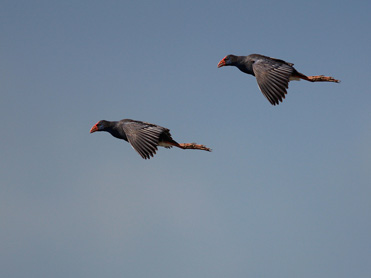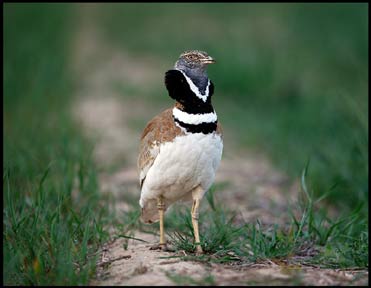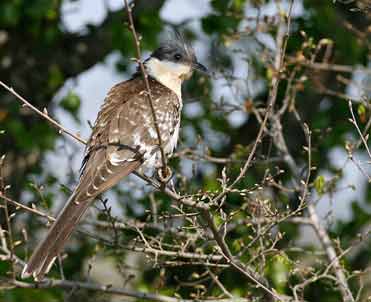
Purple Swamp-hens. Photo by Jan-Michael Breider.
This is the first of what will hopefully be a monthly event throughout 2009. The Birding Hotspot Monthly Report. The first month, as expected, was January.
Below is the link to download the Pdf with the full list of species seen or heard (yes, I count both – if it was heard it was there wasn’t it?) in the hotspot centred around Balaguer. See the earlier entry if you don’t know where that is.
I’m really struggling not to make this a listing exercise. For example when I heard that we had an influx of storm-driven Kittiwakes my first thought was “Wouldn’t that be a bonus for the hotspot list!” These things have their dangers. Today I heard about a couple of Jack snipes just up the road and it was only an unscheduled phone call that prevented me from jumping into the car and off we go. Maybe I’ll check them out next week.
But no that is not the hotspot spirit. One is supposed to go about one’s normal birding activities and record the species encountered.
Back to the list: of the 113 species recorded gulls feature highly, with no less than 6 species, and not a crab or a breakwater in sight! Little Gull, Kittiwake and Common Gull were all nice surprises to add to the more regular Yellow-legged, Black-headed and Lesser Black-backed Gulls.
Ducks also paddled into the picture, as they should do at the height of winter. A Ferruginous Duck was seen in the company of Common Pochards and a Pochard x Fudgy Duck hybrid, on the same lake as 7 Greylag Geese and a Black-necked Grebe. There are still some to get though: Shelduck, Red-crested Pochard and Tufted Duck spring to mind.

Little Bustard. Photo by Jan-Michael Breider.
The drylands are all but hibernating for the winter. Even so, Little Bustards, Calandra Larks, Hen Harriers and Little Owls do their best to brighten them up.
A couple of morning visits to Montsec ensured winter specials like Wallcreeper and Alpine Accentor, as well as the resident Bonelli’s Eagles. Winter passerines seemed to be in good supply too, with Bramblings, Redwings, Yellowhammers and good numbers of Hawfinches.
My prediction for February is little change. Perhaps a passing Crane flock or early Black Stork, a flock of Fieldfares in a fruit orchard, a couple of Black-bellied Sandgrouse on the drylands and Bullfinches near Sant Llorenç de Montgai. February is also the month when Great Spotted Cuckoos often make an appearance, so we’ll see. Ah! The joys of birding!

Great Spotted Cuckoo. Photo by Jan-Michael Breider.
As mentioned above, here is the Pdf with the January hotspot list.
One Response to “First northeast Spain Hotspot Report”
Hi there, I was just checking out a photo of the cuckoo bird from Spain. My husband and I walked the Camino from St. Jean Pied de Port from May to June (5 weeks/800kms) and this was the first time I heard a cuckoo (other than from a clock). I was so surprised the first few times I heard it because it sounded so much like a cuckoo and I don’t think I realized that this was an actual bird until then. Well they serenaded us the entire trip, but, I didn’t see them – they always seemed to be ‘in the distance.’ Still it was great to hear them, as it was the roosters … which seemed to be in country, town and city alike.
I am a western Canadian.
Leave a Reply